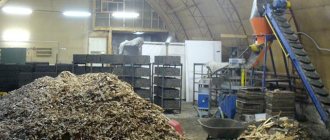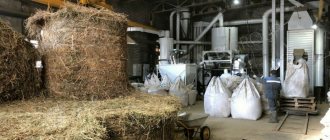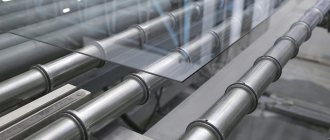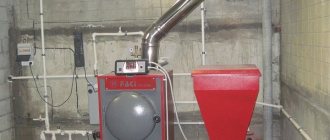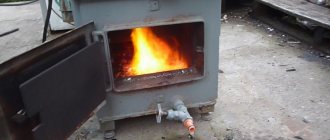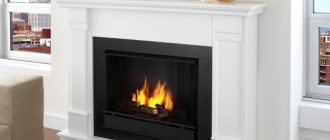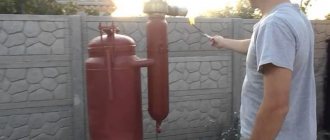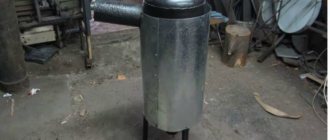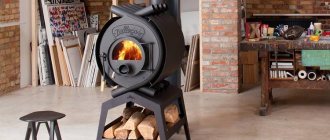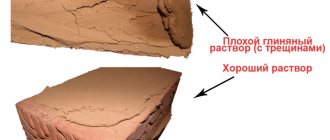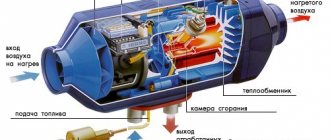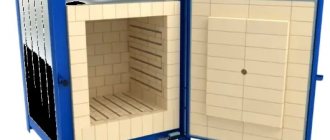The problem of complete waste disposal has long been dealt with in various fields of activity.
The goal of using forest waste 100% has not yet been achieved.
Fuel pellets and briquettes obtained from wood waste make it possible to achieve this already in our time.
Processing of timber, sawing and processing waste has never been so pressing before, except in those regions where there is no commercial timber left at all.
Today, the introduction of new technologies for deep processing of wood waste is becoming increasingly profitable.
What are pellets?
Pellets
are a granular type of solid fuel, cylindrical in shape, made from compressed waste from agricultural production and the woodworking industry. The main materials for the manufacture of fuel pellets are:
- sawdust, wood chips, bark, slabs of coniferous and deciduous (the best option) wood species;
- peat;
- sunflower husks (the most common solution), rapeseed (the best option), straw of various grain crops, corn, husks, cake and much more;
- charcoal;
- household waste.
The base binder is a substance of plant origin - lignin, a natural polymer contained in almost any plant, capable of being plasticized during granulation under the influence of a sufficiently high operating temperature.
What are fuel pellets
Before finding out how pellets are made at home or in a production plant, you should understand what this type of solid fuel is. Pellets for heating are cylindrical granules, pressed from combustible raw materials, the diameter of which can be from 4 to 10 mm, and the length is in the range of 15–50 mm.
The process of squeezing pellets through a cylindrical press matrix
What are pellets made of? Various raw materials of natural origin can be used to produce fuel pellets. Thus, the most common types of raw materials from which fuel pellets are made are:
- industrial waste from wood processing enterprises - sawdust and small shavings (pellets made from sawdust and wood shavings are considered the highest quality type of fuel of this type);
- waste from logging and primary wood processing, which includes, in particular, branches, tree bark, dry leaves and even pine needles;
- waste from enterprises engaged in processing agricultural products (in this case, sunflower husks, as well as wheat, rice or buckwheat husks are used as raw materials for the production of pellets);
- peat (granulation or briquetting makes it possible to make peat extracted in a crumbly state more convenient as a fuel material; moreover, a peat briquette, when compared with peat in the form of a crumbly mass, has a higher heat transfer);
- bird droppings, which are produced in large quantities at poultry farms and are suitable for burning;
- certain types of solid household waste, which, using special processing technologies, are converted into inexpensive and fairly energy-efficient fuel briquettes.
At the beginning of the process, wood materials are crushed into smaller fractions
The qualitative characteristics of fuel briquettes (in particular, the degree of thermal output) largely depend on what the pellets are made from.
Depending on a number of parameters by which the quality of pellets is judged, fuel pellets are usually divided into three main categories.
- There are so-called premium pellets, for the production of which highly purified wood waste is used. Fuel pellets of this category, which are easily recognized by their light color, dense and uniform internal structure, are characterized by high heat transfer and minimal ash content. When they are burned, a very small amount of non-combustible residue remains - only 0.5% of the total mass of fuel. The most significant disadvantage of fuel pellets in this category, which make up the vast majority of pellets produced today, is the fairly high cost.
- Fuel pellets of the industrial or industrial category, which, in addition to sawdust, may contain soil impurities, tree bark, foliage and pine needles in small quantities. Pellets of this category, the color of which is darker than that of premium fuel pellets, have a higher ash content, but at the same time provide decent heat transfer. In addition, pellets in this category are affordable. When using industrial grade fuel pellets, boiler equipment requires more frequent preventative maintenance.
- Pellets of the lowest quality are made mainly from agricultural waste. Fuel pellets of this category are characterized by a fairly high ash content (4% or even higher) and not very good heat transfer. Meanwhile, the low cost of pellets of this category makes their use profitable in boiler houses, with the help of which large areas are heated.
Granular fuel can be shipped in bulk for large boiler houses or supplied in bags of various sizes
Pellets made from sawdust, shavings and other natural raw materials are used not only for lighting heating boilers in residential buildings and industrial buildings: they are used to fertilize and mulch the soil. Such granules are also used as adsorbent elements that absorb moisture well.
Pellet classification
The main regulatory document predetermining the production of pellets is the European Union standard EN 14961-2, adopted in January 2011, on its basis an international quality certificate EN Plus is issued. There are three classes of granular fuel:
- ENPlus-A1 – best premium quality, diameter up to 8.00 mm, ash content up to 0.70%, another name is “white granules”;
- ENPlus-A2 – with ash content up to 1.50%, also called industrial granules, can consist of mixed wood species;
- EN-B – standard quality, with ash content up to 3.00%, an alternative name for agropellets.
In terms of cost, the most expensive pellets are ENPlus-A1 class, the cheapest are EN-B class, it is better not to take substandard fuel.
Basic parameters of pellets
Pellets for heating are granules of white or shades of brown, with a length from 10.00 to 30.00 mm, a diameter of 6.00 and 8.00 mm, less common fuel with a diameter of 10.00 mm, the maximum diameter of the granules is 25.00 mm. The darkening of pellets is associated with the presence in the structure of the material of various non-combustible residues (dust, earth, and a number of others).
The main parameters of pellets are:
- ash content (the lower, the better and the less ash, so the boiler will have to be cleaned much less often);
- humidity;
- calorific value (ENPlus-A1 – 18.0 MJ/kg, ENPlus-A2 – 18.0 MJ/kg, EN-B – 15.0 MJ/kg).
- total length;
- degree of density;
- diameter;
- bulk mass;
- abrasion class.
Pellet manufacturing technology
The production of pellets consists of pressing waste that has been previously dried to a certain moisture content and crushed to a given fraction under a pressure of about 300 atmospheres. At the same time, the use of glue and other additives is prohibited (sometimes unscrupulous businessmen add sand and other non-combustible impurities to them to increase the weight of the granules, and synthetic polymers to ensure adhesive properties).
Main stages of pellet production:
- Grinding. The raw material enters the crusher and is crushed to a given fraction;
- Drying. The resulting raw material is dried to the moisture percentage specified by the technology (about 10% plus or minus 2%);
- Pressing. The dried raw material enters a press granulator, in which it is pressed into granules of a given length and diameter. As a result of compression, friction, and adiabatic processes, the temperature can reach 100°C Celsius, as a result, thermal energy is generated that softens lignin and the particles stick together into granules. This process is called pelletization;
- Cooling. To ensure the strength of the fuel granules, the pellets are cooled after pressing;
- Packing and sending to the consumer.
In some cases, water treatment and additional grinding are performed before pressing; everything directly depends on the type and quality of the raw materials from which the granules are made. Pressing is carried out in molds, ring-type dies using rotary rollers (rollers), which press the raw material into cone-shaped dies located on the matrix. On the other hand, the resulting granules are cut with special knives. After cooling, the pellets are sieved and small particles are sent for recycling. Closed cycle technology is virtually waste-free; only non-combustible impurities are removed. In order to make one ton of pellets, three to five cubes of wood waste are needed. The raw material is compacted approximately three times. To prepare one ton of pellets you need from 30.00 to 50.00 kW per hour.
Production flow diagram
In order to produce fuel pellets that meet all the required characteristics, it is necessary not only to use high-quality raw materials and special equipment for the production of pellets for these purposes, but also to strictly adhere to the technology.
Technological scheme for the production of fuel pellets
The pellet manufacturing process consists of several stages.
- First, the wood raw material is cleaned from foreign impurities and its primary crushing is carried out. As a result of this process, for which conventional crushers are used, wood raw materials are divided into fairly large fractions.
- This is followed by drying, during which the moisture content of the wood raw material is brought to a value not exceeding 12–14%. For drying raw materials, drum or aeration type installations are used.
- After drying, the wood raw materials are subjected to finer grinding, for which hammer-type crushers are mainly used. The output from such installations is fine sawdust or even crumbly wood pulp, reduced to the state of flour, from which the highest quality fuel pellets are produced.
- If, after repeated grinding, the moisture content of the resulting wood pulp does not reach the required minimum value (10–12%), this parameter is artificially increased using steam or ordinary water for this purpose.
- After the parameters of the raw material for the production of fuel pellets are brought to the required values, it is fed to a pressing plant - a pelletizer. In such installations, which may differ from each other in design, the bulk mass is pressed through the holes of the matrix, resulting in the formation of dense cylindrical granules of a certain diameter. Exerting significant pressure on the crumbly wood pulp promotes its spontaneous heating. At the same time, a natural component is released from it - lignin, which has good binding properties. It is this component that ensures the formation of a dense briquette with a stable internal structure from individual particles of crumbly wood raw materials.
- Matrices, in the working cavities of which crumbly wood raw materials are converted into dense fuel briquettes, can be cylindrical or flat. Installations of the first type, as a rule, are produced in a stationary design and are used primarily to equip industrial enterprises. Their design includes a special cutting device that allows the production of pellets of approximately the same length. Flat-type matrix installations, which can be equipped with one or more rollers, are characterized by compact dimensions. This type of equipment is most often used to organize the production of pellets at home or in a small enterprise.
- The finished pellets, the temperature of which, as a result of their spontaneous heating during the pressing process, can range from 65 to 90°, are cooled, dried if necessary, and then packaged and sent to consumers or to a warehouse.
The stages of pellet production are demonstrated in detail by relevant videos that are easy to find on the Internet.
Necessary machines for the production of pellets
Equipment for the production of sawdust pellets includes:
- crushers (chopping machines) for grinding the raw materials used to a given fraction;
- dryers to ensure the required percentage of humidity of the initial, base raw materials;
- hammer mills (in some cases they are replaced by flaring machines, disintegrators, everything depends directly on the characteristics of the feedstock), make it possible to obtain raw materials with a fraction of up to 4.00 mm;
- screw mixers (used when using overdried raw materials with a moisture content of less than 8.00%, by dosed supply of steam or water);
- presses (differ in the type of matrix used, which can be flat or round).
Dryers, in turn, are divided into:
- principle of operation (can be drum or belt (cost more, but are more productive and safer to use));
- drying technologies (using flue gases, water vapor or hot air);
- the fuel used (gas, wood waste, coal, etc.).
To burn pellets, special equipment is used - a pellet boiler.
.
The optimal solution in terms of price/quality/performance ratio on the Russian market is heating appliances from the Polish manufacturer Metal-Fach, including boilers from the SD DUO
,
SD DUO BIO
,
SMART
,
SMART EKO
,
SEG, SEG BIO
.
They have a steel heat exchanger (P265GH steel with a thickness of 4.00 to 6.00 mm is used for production), an efficiency of over 90%, an innovative, modern type controller FL 310LGRTC
, with continuous logic and PID control, as well as an upper combustion chamber and a retort type burner.
Also worthy offers are:
- domestic boilers created in Krasnoyarsk, ZOTA
Pellet
series ; - joint development of the Russian-Polish company Vulkan
, the
EKO
; - pellet boilers from the legendary Italian company FACI
Caldaie,
FACI SSL/SSP
.
You can purchase pellet boilers in a wide range, get the necessary advice, order installation, warranty and post-warranty service in Krasnoyarsk from the Kras-Kotel company.
Production
The production of pellets cannot be called a complex process, but it requires high-quality equipment.
If in the production of wood concrete an important element of production was a chip cutter, then in the case of the production of wood pellets it is only one of a number of necessary ones, but not the most expensive.
The heart of production is the granulator press .
It is he who produces the final product - pressed wood pellets .
It is often possible to simplify production by substituting technological cycles. However, in the production of pellets, simplification is only permissible in the design of the press, which is directly related to the productivity of the installation.
The granulator, which is used in the production of feed from meat and bone meal, and the granulator, which is used in the production of pellets, are very similar in appearance.
Despite the similarities, a feed granulator will not be able to produce pellets with a density normal for fuel pellets due to:
- features of the materials used;
- calculated loads.
Why this happens - we will consider in detail below.
Technology
The production technology of pellets, like most types of briquettes, is based on lignin .
This substance is released during the direct production of pellets (briquettes).
In order for the pellets to be obtained in accordance with the required parameters, several rules must be followed, thanks to which the desired product is obtained.
At the entrance we do not always have either pure sawdust or sawdust cuttings.
Branches from plots in the forest can also be used as raw materials. But this is profitable when the production itself is nearby. The raw materials can be:
- sawdust,
- shavings from the workshop.
The essence of the technology is to give raw materials, regardless of their original appearance, the required dimensions and moisture content immediately before pressing.
Stages
Chip cutting
The very first stage, when wood waste is chopped into chips for subsequent drying.
The nuances lie in the dimensions of the raw materials.
If the production of pellets is powerful, with noticeable ratios in terms of the mass of products produced per hour, then the equipment can easily grind into chips without pre-treatment:
- stumps,
- trunks of fallen trees,
- other waste.
An ordinary PM-200 type chipper can process only branches and twigs that do not exceed the size of the neck of the loading opening.
Screw and rotary chippers for large-sized wood waste belong to a higher class of equipment; they allow processing several tons of wood per hour.
Drying
Drying wood chips is necessary for two reasons, and compliance with these standards is important for the correct completion of the technological process. Initial drying is achieved by laying the wood chips in piles, without forced drying on drying lines, although such an initial option is also possible.
The initial cutting into chips does not always give the result that is expected from a chipper. Before sending the resulting wood chips for regrinding, it must be dried, since the principle of operation of the grinder is based on the physical properties of dry wood chips , not raw wood.
The second important point is that for the release of lignin contained in wood cells and for gluing particles in the press, a certain humidity , and this humidity is also regulated from the point of view of the quality of the resulting product.
Regrinding
Adjusting the size of the chips to sizes acceptable for processing in a granulator is the next step after drying.
Additional grinding of woodchips is carried out in hammer mills .
As a result, the size of the raw material is reduced to values of no more than 4 mm in any dimension.
This standard size of raw material can also be obtained if you have a flake machine .
Raw materials enter it in the form of:
- wood chips
- roots,
- stumps,
- branches,
- trimmings from the sawmill.
It is precisely because of the size of the granulator matrix that compliance with the size of the raw material fraction is required.
Hydration
The quality of the product exiting the granulator is regulated by the moisture content of the raw materials. The average humidity of sawdust or crushed wood chips entering the granulator press should range from 7 to 10%, since this is the most optimal ratio of the moisture content of the raw material to its volume .
Humidity, as mentioned above, is better to bring it from the minimum value to the optimal value, rather than setting up drying lines for raw materials with sampling and moisture measurements.
In drum-type humidifiers, the raw materials passing through the drum hopper are processed with hot steam, which penetrates the mass of raw materials and condenses on the surface of the sawdust. This is the best option for hydration.
The ratio of water molecules in steam in terms of volume allows you to narrowly regulate the total volume of water for the entire passing mass of raw materials.
Production
A press granulator for the production of pellets has a so-called matrix .
It may be:
- flat metal surface
- round (cylindrical).
Flat die presses originally designed for use where high pressure was not required at the contact points:
- in feed granulators,
- for the chemical industry.
Presses with a round matrix were created from the very beginning for the production of pellets. After the start of using rollers and flat dies made of high-alloy metals and alloys, it became possible to use models of granulators with flat dies in the production of pellets.
The matrix in its structure is a metal part with a thickness of 3 cm, with holes from 6-10 mm, depending on the performance.
Rollers in the contact zone with the matrix create crushing of the raw material due to pressure and push the mass through holes in the matrix , at the exit from which knives cut off the emerging cylindrical granules.
The operating temperature in the contact zone can reach high temperatures , but the optimal temperature is considered to be 100-120 degrees Celsius.
It is at this temperature, when the fibers and cells of wood are crushed, that the lignin released under the influence of moisture in the raw material glues the wood pulp together. In this case, the compaction of wood in comparison with the incoming raw materials reaches three times the size.
It is strictly not recommended to exceed the established temperature and humidity thresholds. At excessively high temperatures and normal humidity, high-quality gluing of wood raw materials does not occur, and at increased humidity, the steam inside the pellets breaks the pellets themselves.
These reasons can negate the entire granulation process with a high percentage of defects.
Therefore, many models of granulators also have a built-in pellet cooler. If all requirements for temperature and other conditions are met, the output is granules of very high quality . We will look at examples of equipment below.
Equipment
Equipment for the production of wood pellets is produced by many enterprises. Let us briefly consider the main models of machines for the production of sawdust pellets.
Domestic manufacturers
- Pellet press MZLP-200, Moscow.
- productivity up to 100 kg per hour,
- engine power 5.5 kW/h,
- granule diameter 6 mm,
- price 150 thousand rubles.
- Chip cutter MP-5, Izhevsk.
- productivity 5 m3/hour,
- engine power 40 kW/hour,
- cost from 190 thousand rubles.
- Hammer chopper MI-3, Izhevsk.
- productivity 1 ton per hour,
- engine power 40 kW/hour.
- costs from 360 thousand rubles.
- Aerodynamic drying, LLC “Kupets”, Perm.
- total power 7 kW/hour,
- productivity up to 400 kg/hour,
- price 15.6 thousand USD.
Foreign manufacturers
- Dryer drum for pellet raw materials, Germany-China, supplier "AsiaTechnoImport", Novosibirsk.
- total power 15 kW/hour.
- dimensions 1.5 x 12 m.
- Press granulator CPM (California Pellet Mill), USA/Netherlands.
- productivity up to 5000 kg per hour,
- engine power from 90 to 500 kW/hour,
- diameter of granules depending on model,
- price from 160 thousand euros.
- SKJ2 series pellet granulator, Germany-China.
- engine power 3 kW,
- productivity up to 50 kg/hour,
- cost 80 thousand rubles.
- Cooling hopper for pellets SKLN, Germany-China.
- engine power 60 kW/hour,
- productivity up to 1500 kg/hour.
The process of making pellets in production is presented in the video:
How to distinguish high, premium quality pellets from substandard fuel?
When purchasing pellets, you need to pay attention to:
- the surface of the material must be smooth, shiny, without signs of deformation (swelling and microcracks);
- diameter (this parameter is established by the standards, the minimum value is 4.00 mm, the maximum is 10 mm, also standard are fuel pellets that have a diameter of 6.00 and 8.00 mm, please note that a pellet boiler operates on pellets of a certain fraction);
- length (this parameter should be about 20.00 - 30.00 mm, this is the optimal value, although the equipment can work on pellets with a length of over 50.00 mm);
- smell (the granules should have a slightly sweet smell of freshly prepared glue, this is a clear sign of excellent quality);
- color (it is important to remember that the highest quality pellets are white or slightly cream-colored, agropellets are predominantly dark, and in wood pellets, dark color indicates that bark, other impurities have been added, or wood species have been mixed);
- dust (there should be a minimum amount of dust on pellets, so it is better to buy fuel in sealed packaging);
- impurities (the presence of non-combustible impurities in the granules themselves can only be checked by burning them and determining the residue in the form of solid particles).
Homemade granulators
Although a lot of equipment is required for the production of pellets, the main device is a granulator. With its help, pellets are formed from raw materials. There are several models of granulators:
- Screw. The structure is similar to a household meat grinder. The same screw shaft and matrix - a grid through which raw materials are pressed. They can be used for soft materials such as straw. It doesn’t “pull” wood, even well-chopped wood—it doesn’t have enough effort. In principle, if the parts are strong enough, you can install a more powerful motor.
Schematic diagram of a screw extruder (granulator)
- With a flat matrix. There is a metal circle in which holes of the required diameter are made (usually 3-4 mm). There are toothed rollers that force the raw materials through the holes, forming granules. Design of the main unit of a granulator with a flat matrix
- With a round matrix. The idea is the same, only the matrix is made in the form of a ring, so the rollers are located in a different plane. This option has greater productivity, but granulators of this type are rarely made by hand.
Structure of a granulator with a cylindrical matrix
The simplest screw extruder in structure. It is often made for pressing feed, but can also be used to make fuel pellets from soft raw materials. If you need to make equipment for the production of pellets, this is the easiest option. Provided you know how to operate a lathe and welding machine.
Homemade screw granulator
As with any equipment of this type, the screw granulator has a matrix. In this case, it is similar to the mesh of a meat grinder, only it is made of a much thicker plate. The second important unit is the screw shaft. All these details can be made with your own hands. How to describe it in words is useless, watch the video.
Making a matrix for a finished screw.
The screw and matrix are “packed” into a housing or sleeve. How to make it, see in the next video.
After assembling the main unit, you need to install a motor with a gearbox and a hopper into which chopped straw will be supplied. You can run it.
Advantages and disadvantages of solid fuel in the form of fuel pellets
The main advantages of pellets:
- environmental cleanliness (when burning this type of solid fuel, carbon dioxide is released in volumes equal to the volumes formed during the natural decomposition of various wood wastes);
- fire safety (pellets are less susceptible to spontaneous combustion than other types of solid fuel);
- optimal humidity (8-10% versus 30-50% for logs) and density (one and a half times higher than that of firewood);
- remarkable calorific value, one ton of fuel pellets is enough to produce 3500 kW/h of thermal energy;
- constant and very high bulk density, which facilitates logistics, loading and transportation of pellets;
- the uniformity of the structure in shape and size makes it possible to automate all processes of loading and loading and combustion of fuel pellets in boilers.
Cons of pellets:
- high cost of solid fuel at the present stage;
- to burn pellets you need a special pellet boiler equipped with automation, which also costs more;
- the volume of supply on the market is low, the situation will improve over time, but pellets must be purchased in reserve and stored in warehouses, preventing excess moisture from entering.
Fuel briquettes and pellets - what are they?
Wood briquettes and pellets (fuel - general group) are products made from modified wood (standard designation).
This group includes both briquettes and pellets made directly from wood sawing waste, and those made from all other organic raw materials that have the ability to burn.
Classification
- White. The highest quality pellets. They are produced purely from wood sawing waste with minimal bark content. These pellets have:
- highest calorific value,
- lowest ash content,
- the highest price on the market.
- Gray. Produced from raw materials with a high content of bark and soil inclusions. Their calorific value is lower, their ash content and weight are higher. Applicable in:
- private use in pellet boilers,
- small boiler houses.
- Industrial. Made from:
- peat,
- coal,
- solid waste,
- other industrial waste.
- Agropellets. Made from husks:
- seeds,
- straw,
- other agricultural waste.
Pellets are characterized by the following granule characteristics :
- diameter - from 6 to 25 mm;
- length - from 5 to 50 mm;
- density - from 1000 to 1400 kg/m3;
- humidity - from 8 to 10%;
- bulk mass - 500 - 600 kg/m3;
- ash content - maximum 5%;
- abrasion.
The main characteristics and calorific value of pellets, depending on their type, are shown in the table:
| Type of pellets | Heat of combustion | Humidity | Ash content |
| “White” - premium pellets, made from wood without bark | 17.2 MJ/kg | 8%-10% | 0.3% |
| Industrial | 17 MJ/kg | 8%-10% | 0.7% |
| Agropellets | 15 MJ/kg | 8%-12% | 3% |
Fuel briquettes are mainly made from wood, but production technology is divided into several different areas . Let us consider them in more detail below, since the manufacturing principle is conventionally divided into two directions, each of which includes several subtypes.
Advantages and disadvantages of pellets
Like any product, pellets and briquettes have their pros and cons.
Advantages
The undoubted advantages immediately include the fact that wood in the form of pellets compared to ordinary firewood:
- takes up less volume;
- has lower humidity, which allows it to release more heat.
Pellets have a high bulk density, which allows them to be transported with high efficiency and minimal labor costs.
Standard for pellet transportation:
- in bags,
- in big bags,
- in cars for bulk materials on railway transport.
We will not consider low environmental impact in detail.
We will limit ourselves to information about low ash content and low CO2 emissions .
During the combustion process, pellets release the same amount of carbon dioxide as was consumed by the plant during growth.
Flaws
The only disadvantages are:
- errors in transportation;
- the lack of a clear supply of pellets to certain areas where people use pellet boilers.
In other words, you need to have a strategic supply of pellets for different occasions. In the case of transportation, there is a possibility that the pellets will gain moisture, but this can be solved by additional natural drying at the point of use .
Although pellets are transported in closed containers using moisture-proof shells, there may be situations when transport is carried out in bulk, without any protective measures.
Where can it be used?
The use of fuel pellets is widely regulated abroad. In Russia, pellets have so far found wide use only in the western regions of the country, where the processing of wood waste is already an established industry.
Along with solid fuel, electric and gas boilers, anyone can install a pellet boiler as an alternative. This allows you to be independent of gas or electricity prices. Whatever one may say, in terms of firewood or electricity, pellets remain the winner on all counts .
In addition to private use, pellets are widely used in production as an alternative to purchased coal fuel or other types of fuel. An example is woodworking production, which uses drying chambers and its own heating system in the autumn-winter period.
Own production of pellets provides benefits on several points:
- Full use of all wood waste, starting from the forest plot.
- Reduces costs for cleaning and disposal of waste after cutting trees. Consequence:
- minimum workers
- lower cost of timber harvesting.
- Complete recycling of wood waste allows you to abandon the purchase of energy resources for heating areas and the services of thermal power plants and switch to heating on your own. In practice, this results in enormous savings.
Pellet cost
Let's take the initial data:
- the average cost of industrial pellets in the Krasnoyarsk Territory as of December 2015 is 3,500 rubles per ton (3.50 per kilogram);
- the price of birch firewood is 1,300 rubles per cubic meter, in terms of tons (a cubic meter of dry birch firewood equals 650 kg of weight) is 1,846 rubles per ton (1.85 rubles per kilogram);
- the calorific value of birch firewood is 10 MJ/kg;
- The calorific value of wood industrial pellets is 18 MJ/kg.
In order to obtain 100 MJ of thermal energy, you need 10 kg of firewood (100/10), that is, 18.50 rubles, or 5.5 kg of pellets (100/18), that is, 19.44 rubles. The difference in cost is 1 ruble per 100 MJ. Moreover, it is necessary to note the undoubted advantages of pellets with an ash content of 1.5% over firewood with an ash content of 10%, the difference is obvious. It should be taken into account that the pellet market is growing dynamically, and with an increase in supply, the price will undoubtedly decrease. By the way, pellets can be made independently from agricultural or wood waste. Read below how.
Equipment for the production of
Both industrial lines and mini-granulators can act as equipment for the production of pellets. Moreover, these same mini-granulators can be presented with various drives, such as a diesel engine, an electric motor, or driven from a tractor shaft. Each of them has its own advantages and disadvantages, but the highest pellet productivity (about 200-250 kg/h) can be provided by a pellet press driven by the tractor power take-off shaft.
Such a line costs about 1,800,000 rubles. The main element here is, of course, the granulator, but the production of pellets requires properly prepared raw materials, so other equipment is also required.
Key elements of pellet lines and their approximate prices separately:
- Wood chipper (wood chipper) - about 180,000 rubles.
- Dryer of raw materials for the production of pellets – from 400,000 to 2,500,000 rubles.
- Granulator - from 50,000 to 1,100,000 rubles. Model OGM-1.5 costs about 1,000,000 rubles.
- Pellet cooler – about 400,000 rubles.
It is worth keeping in mind that a mini-granulator, which is equipped with an electric motor, is quite bulky and requires a stationary installation, while a mini-granulator with a diesel engine is quite mobile and can be used at the sawmill itself or directly in a furniture workshop. And the last version of the mini-granulators described above is especially relevant for those who have a tractor at their disposal.
As for industrial lines, it should be noted that the estimated cost of a line with a productivity of 700-100 kilograms of pellets per hour will be $132,000, respectively, with a productivity of 2000 kg/h the cost will be about $196,000.
We make pellets with our own hands
You can make pellets with your own hands. To do this we need to assemble a granulator. It is necessary to take wood or agricultural waste, grind it to a particle fraction of 30.00-50.00 mm, dry it to a moisture content of 15.00%, grind it to particles with a fraction of 2.00 mm and place it in a granulator. In the case when you use agricultural waste, such as sunflower husks, rapeseed or sawdust, as the initial, basic raw material, you do not need to crush anything. But if branches, bark, or various substandard lumber are used, it is necessary to crush, although the use of a granulator allows you to omit this operation. The dryer is made from an ordinary metal barrel. It is better to use a granulator with a flat matrix (a cylindrical matrix in the shape of a perforated drum is a more complex solution) and a perforated disk with outlet holes in the shape of a cone with a diameter of 8.00-10.00 mm, this is the optimal solution. You need to buy a matrix and rollers (the production of spare parts is carried out by manufacturers of equipment for the production of animal feed). The matrix is also made independently, from steel with a thickness of at least 20.00 mm, and gears are used as rollers. You will also need a gearbox and an electric motor with a power equal to or greater than 15.00 kW. It is necessary to ensure rotation in the range of 60-120 revolutions per minute. The shaft can be installed both horizontally and vertically; the main thing is to make tanks for loading the raw materials and subsequent unloading of pellets.
Stages of making pellets:
- we take or make a matrix, make a hole in the center for the gearbox and always a groove intended for landing;
- gears (rollers can be used, the width of which must match the width of the working surface of the matrix used), are put on the shaft strictly perpendicular to the axis of the installed gearbox shaft using a conventional coupling;
- the cylindrical body is welded from sheet steel or steel pipe, taking into account the dimensions of the matrix, which should rotate easily and freely, providing holes for unloading pellets and a tray also made of sheet steel or steel pipe, the bottom and top of the structure can be made detachable to facilitate maintenance;
- the output shaft of the selected gearbox is strengthened in the lower part of the machine using a coupling and always bearings;
- the matrix, as well as the rollers, are installed in a cylindrical body;
- the resulting structure is mounted on a frame made of a channel or an ordinary angle and is rigidly fastened; all that remains is to install the engine and connect the output shaft to the installed gearbox.
The future belongs to pellets and pellet boilers. Kras-Kotel specialists will help you make the right choice of pellet boiler, taking into account all your wishes and the characteristics of your home.
Share on social media networks:
How to organize the production of pellets with your own hands
The fairly high cost of fuel pellets makes the question of how to make pellets yourself very relevant for owners of private houses and summer cottages who want to use this type of fuel. It should be said right away that it is possible to make a homemade granulator for making pellets. However, before embarking on such a project, you need to carefully assess your capabilities. The manufacture of such equipment, during the operation of which significant loads are created, requires not only quite serious technical training and the availability of appropriate skills, but also the use of turning, milling, welding equipment, as well as metalworking tools. All this presupposes the presence of high qualifications and sufficient experience in carrying out work of this nature.
Homemade granulator device
The most important condition for the feasibility of self-production of fuel pellets is the availability of affordable raw materials, which must meet certain requirements for their quality characteristics. If you purchase raw materials for making pellets yourself, which will have to be pre-processed, the cost of the finished product may turn out to be such that it is simply unprofitable to use it for home heating.
When making pellets with your own hands, you should also take into account the fact that not all wood raw materials are suitable for production. Optimal in terms of obtaining high-quality fuel pellets, which have a dense and stable structure, are waste coniferous wood.
Drawing of the housing and matrix drive
What you need
In order to make pellets at home, as mentioned above, you will need a machine for the production of such fuel pellets. Let's consider the main elements of its design.
Flat matrix of round shape
It can be purchased ready-made or made independently using a sheet of metal for these purposes. The thickness of such a sheet must be at least 20 mm. The holes in the matrix in which the fuel granules will form must be conical. When purchasing or making your own matrix for a machine for the production of fuel pellets, you should keep in mind: the larger the diameter of such a structural element, the higher the productivity of the equipment will be.
The size of the granules depends on the diameter of the holes in the matrix
Operating principle of flat die granulator
Powerful rollers with serrated working surfaces
These elements, interacting with the surface of the matrix, press loose wood pulp through its holes, forming dense granules. Such rollers, mounted on a horizontal shaft through rolling bearings, are driven by a rotating vertical shaft. The degree of pressure of the gear rollers to the surface of the matrix is adjusted using a screw mechanism.
Gear rollers and matrix
Device case
It is made from a pipe of the appropriate diameter or from a metal sheet rolled into a cylinder. The inner diameter of the housing must ensure free rotation of the matrix installed in it.
Matrix with rollers inside the housing
Electric motor
The shaft of the electric motor is connected to a vertical rod that rotates the matrix.
V-belt drive
Bunker devices
These devices are necessary for loading feedstock and unloading finished fuel briquettes.
Powerful supporting frame
For the manufacture of the frame, rolled profiles are usually used.
Homemade installation for the production of fuel pellets
Before making a home-made installation for the production of pellets, it is necessary to develop its drawing, focusing on the technical characteristics that such equipment should have, as well as the parameters of the raw materials used and the fuel pellets themselves.
